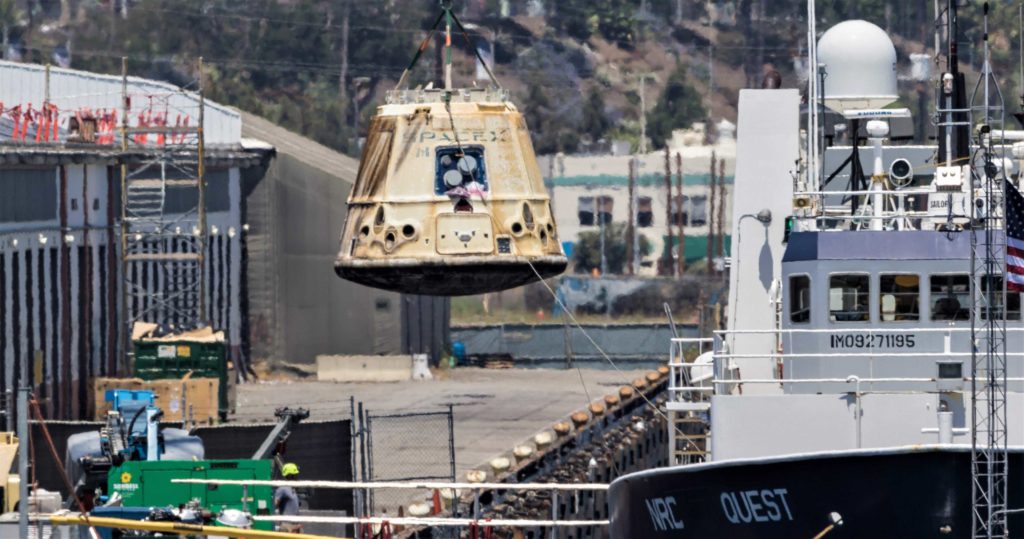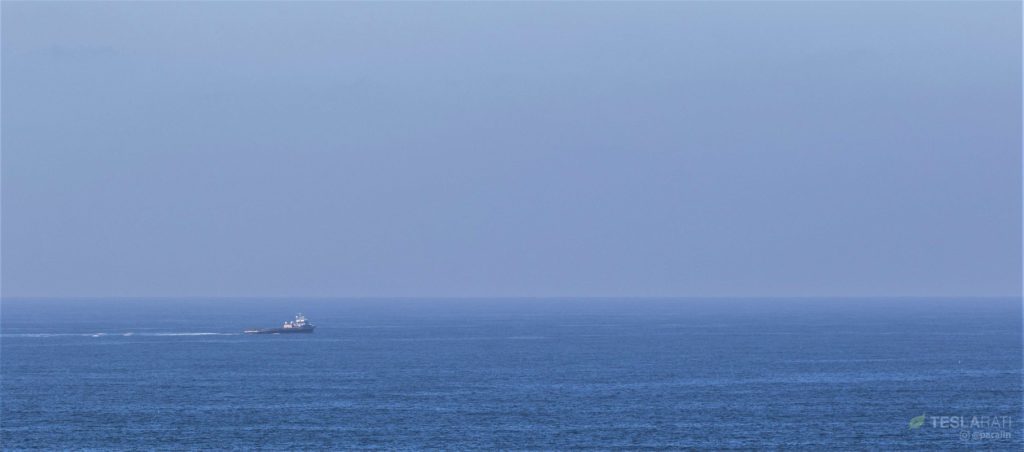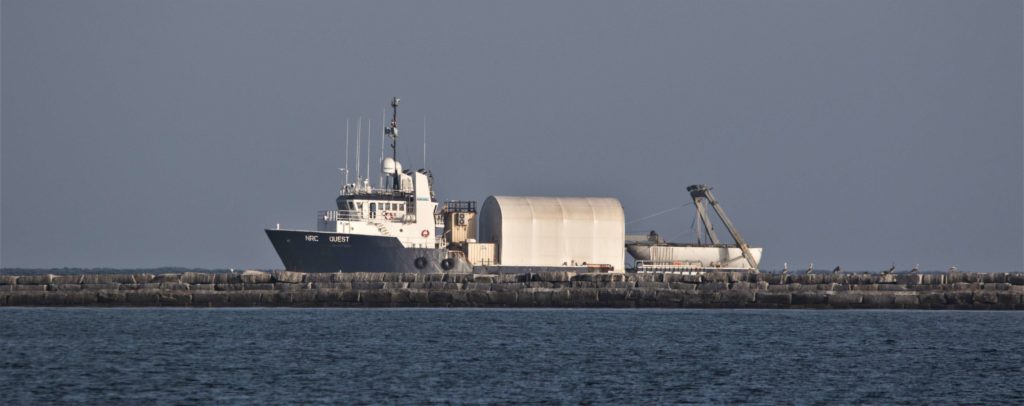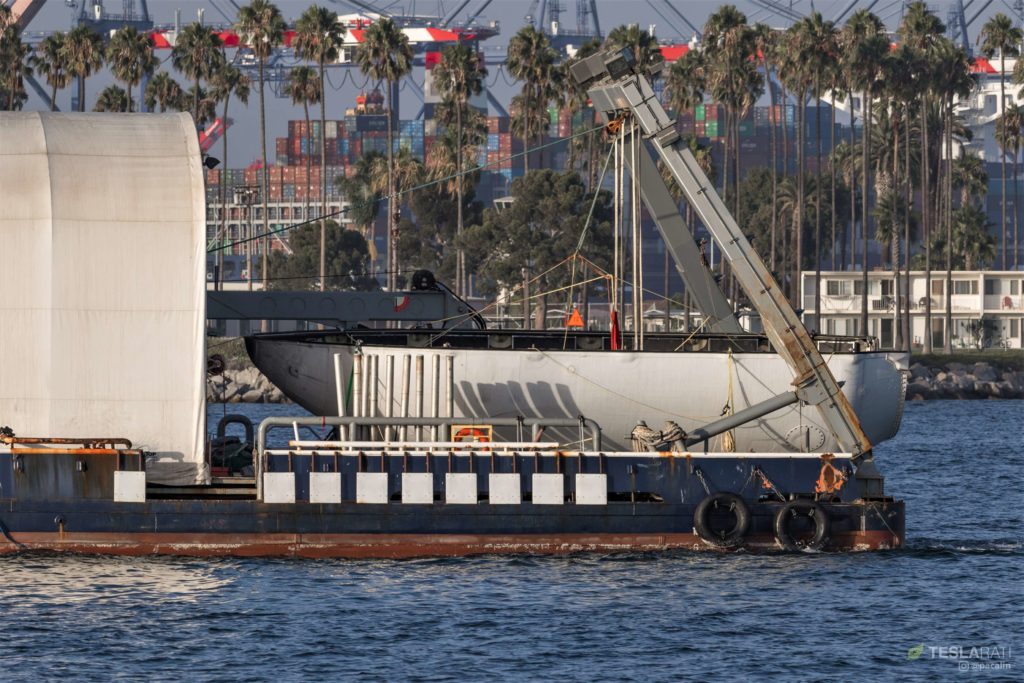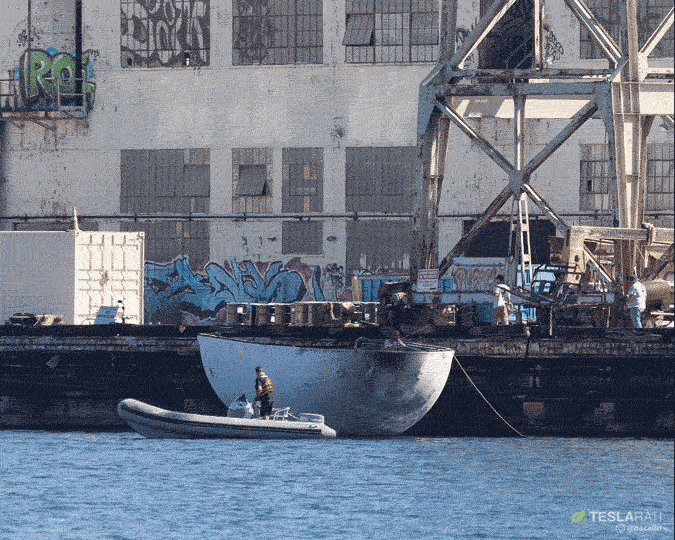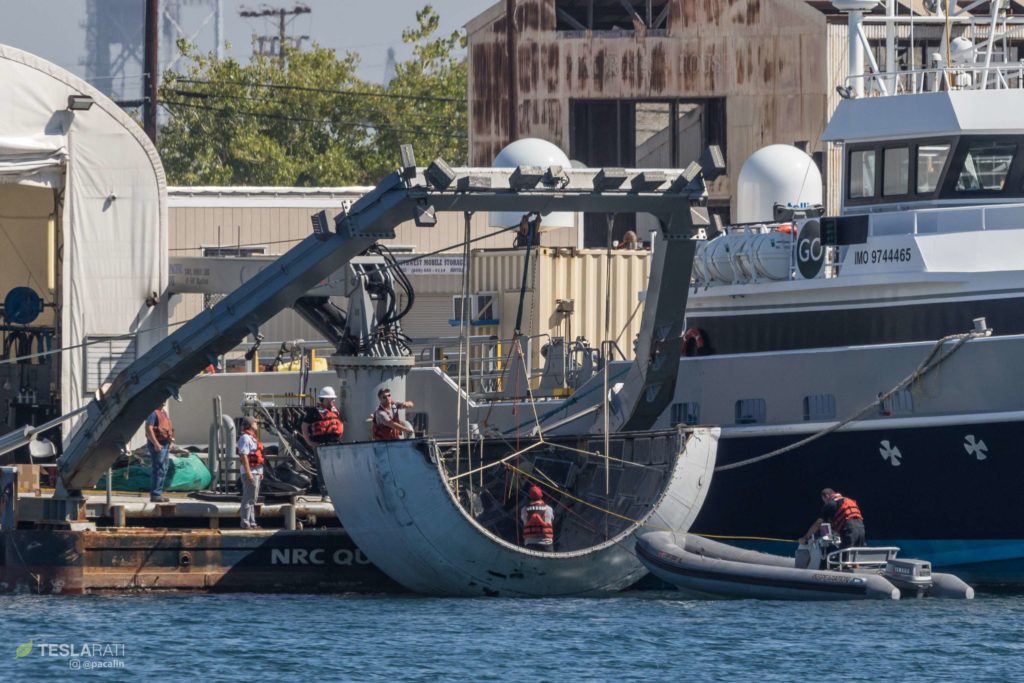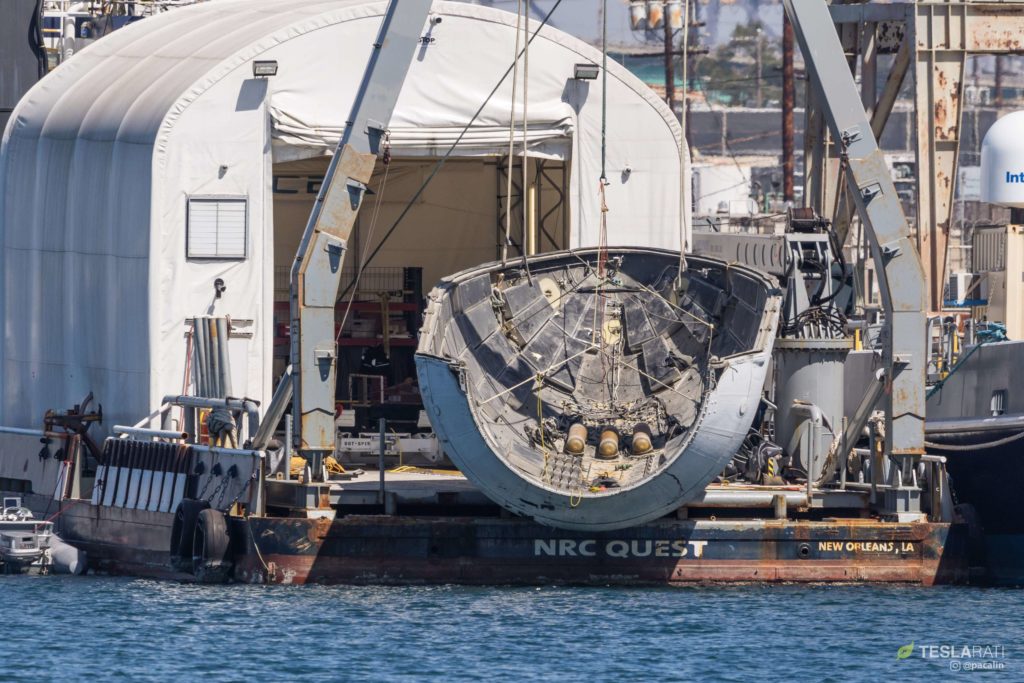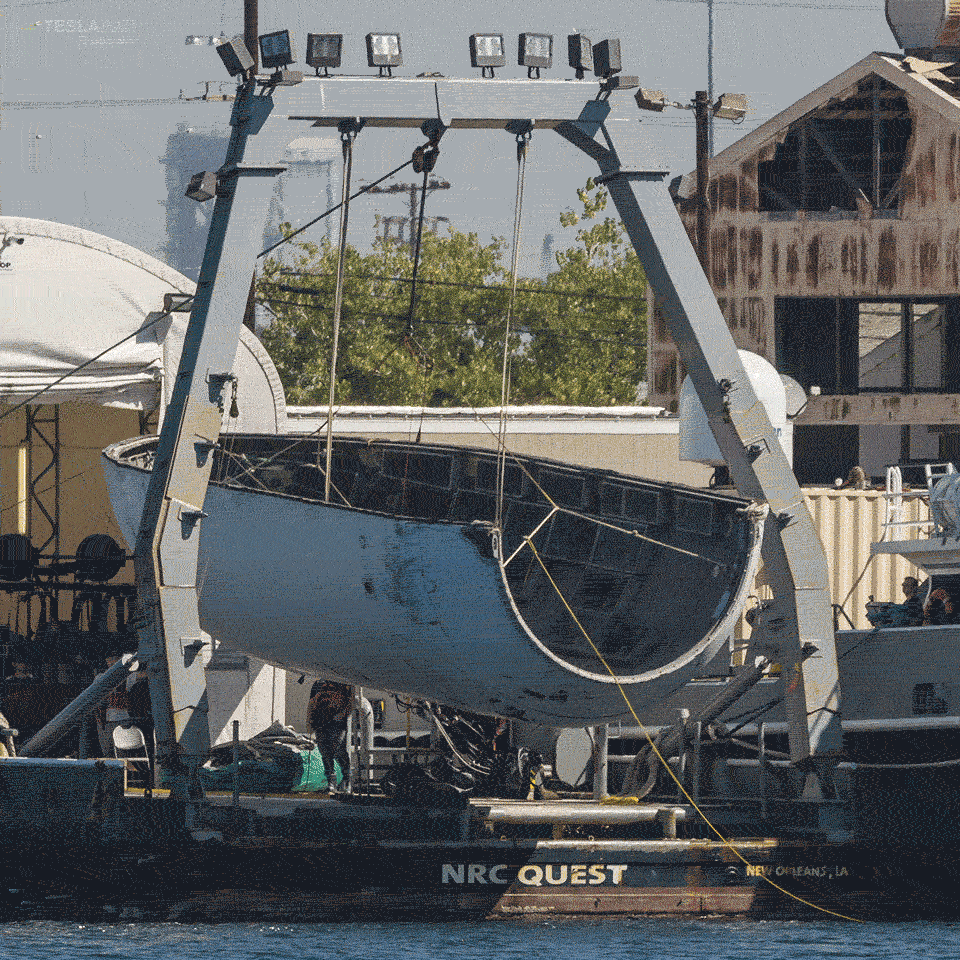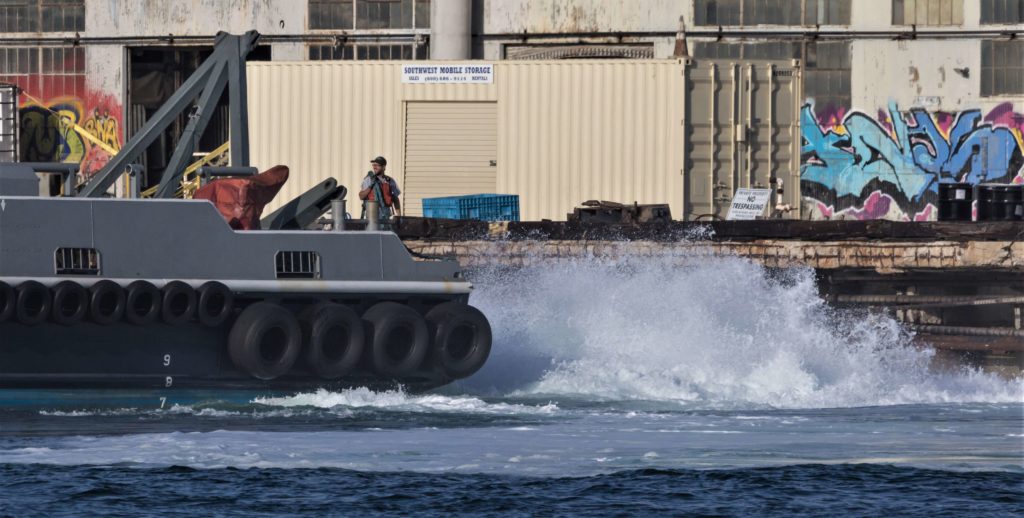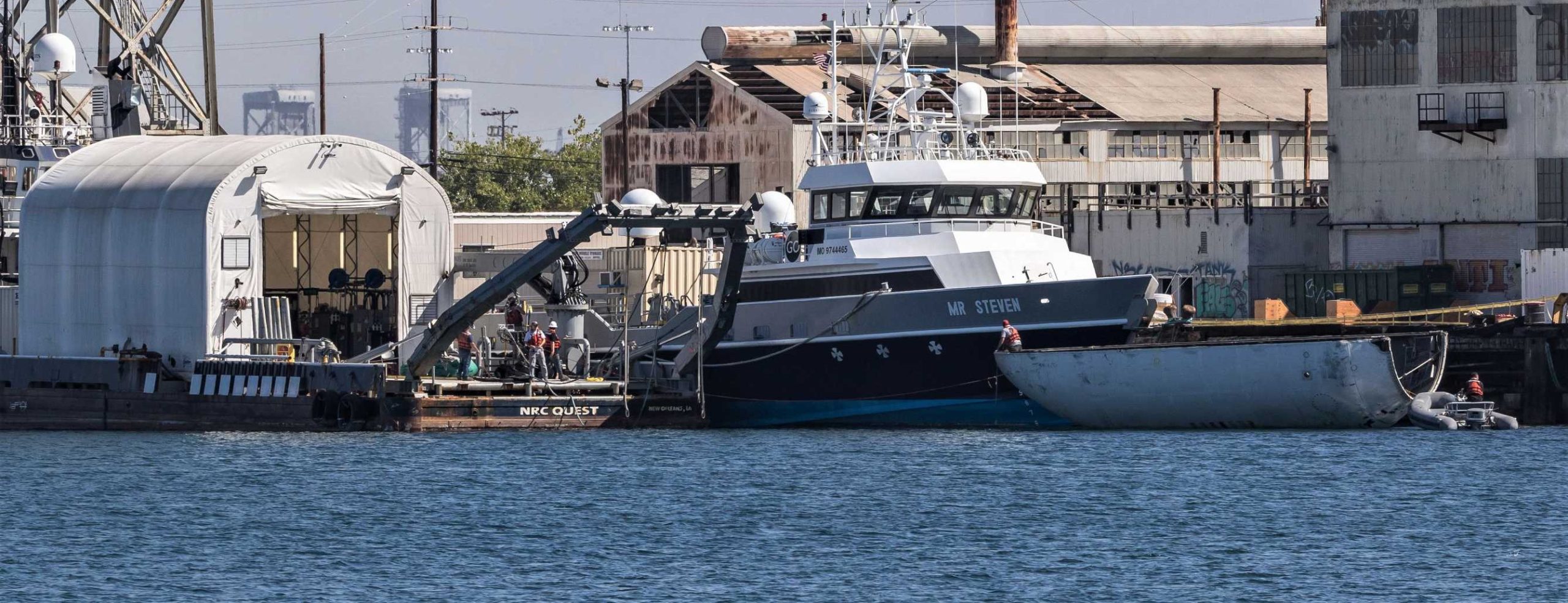
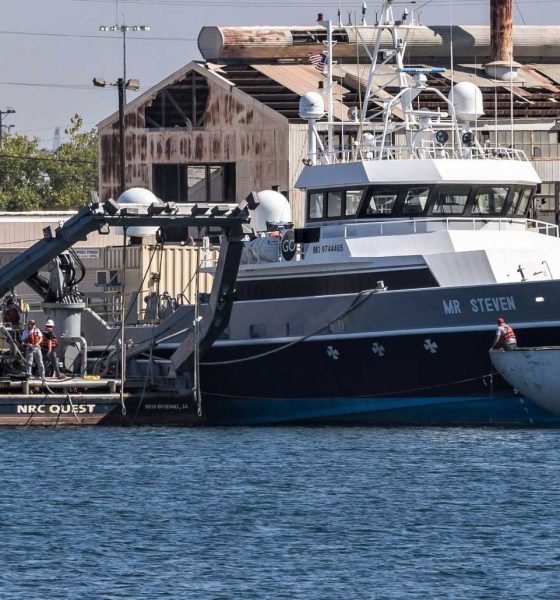
News
SpaceX techs work towards Falcon 9 fairing recovery with wacky series of experiments
Over the course of the past week, Teslarati photographer Pauline Acalin has captured a multitude of unusual occurrences at SpaceX’s Port of Los Angeles dock space, each time involving a Falcon fairing recovery vessel like Mr Steven or NRC Quest, a Falcon fairing half (flight-proven or otherwise), and one of several attenuating circumstances.
More likely than not, what appears as a menagerie of weird and disconnected events on the sidelines is actually a reasonably organized leg of a larger program, in this case focused on experimentation and testing to close the fairing recovery loop and secure Mr Steven’s first successful fairing catch.
From @USCGLosAngeles – A captive carry test involving a helicopter picking an item from a vessel will be conducted 9/20, 11-1300, in the vicinity of San Clemente Island in the San Nicolas Basin. Mariners are requested to maintain a distance of 5NM from the operation. pic.twitter.com/nvy6Wo0IvF
— Marine Exchange (@MXSOCAL) September 19, 2018
The mystery of Catalina Island
Now-iconic fairing recovery vessel (or net-boat, or claw-boat) Mr Steven has been out of commission since late August, at which point SpaceX technicians removed all four of his arms and their eight complementary shock absorber booms towards unknown ends. If SpaceX’s past is any judge, those arms are probably in the process of being upgraded, but it’s impossible to judge thanks to the fact that they have simply disappeared from the Berth 240 docks where they were briefly stored. SpaceX certainly has a way with transporting massive, ungainly objects without stirring a whisper.
Despite lacking arms for more than a month, Mr Steven has still performed a number of sea-trials, ranging from average jaunts a few miles away to a mysterious armless test described in the tweet above. Why exactly Mr Steven was involved in an experiment involving a helicopter “picking an item” – in this case a flight-proven Falcon fairing – off of a vessel while entirely lacking the arms and net he would use to catch said fairing is entirely unclear. Perhaps it was meant to test a datalink or a change to fairing recovery hardware. Whatever transpired, a group of SpaceX technicians certainly flew to Catalina Island and were working alongside or with a Blackhawk helicopter capable of externally carrying up to 3600 kg (8000 lb) of cargo.
- Shortly after completing the CRS-15 resupply mission, Cargo Dragon C110 is craned from NRC Quest to SpaceX’s Port of San Pedro berth, 08/05/18. (Pauline Acalin)
- Mr Steven was out and about conducting high-speed maneuvers two days prior, and also joined NRC Quest near Catalina Island on the 20th. (Pauline Acalin)
- NRC Quest returned to port with a Falcon fairing aboard after a long day doing *something* at sea. (Pauline Acalin)
- Note the sooty tip of the fairing’s nose, a telltale sign that it previously flew on a Falcon 9 launch. (Pauline Acalin)
Multipurpose recovery vessel NRC Quest – nominally dedicated to Cargo Dragon spacecraft recoveries – returned to SpaceX-leased Berth 240 a few hours after the September 20th test window closed, sooty Falcon 9 fairing half in tow. Still, this certainly isn’t the weirdest Falcon fairing-related activity to occur last week.
Fairings aplenty
Meanwhile, over at Mr Steven’s old berth and drone ship Just Read The Instructions’ current berth, a different Falcon fairing half appeared sometime in the last several days in an unusual state, seemingly either fresh out of the factory or in an advanced state of disassembly. The base of this particular fairing half seems to be entirely missing the usual layer(s) of material (cork, among other things) used to waterproof and act as a lightweight heatshield. A new fairing half sitting out in the elements with zero protection would be exceptionally unusual, as CEO Elon Musk has noted that they each cost several million dollars ($3m to be precise), and exposure outside of a cleanroom could very well prevent this half from ever being operationally flown.

The next best conclusion to be drawn is that this unique fairing half is new or flight-proven (with skin and shielding removed), but sitting at SpaceX’s dock space in order to prepare for one or several active drop tests in pursuit of Mr Steven’s first successful fairing catch. But who really knows, to be honest. The fairing’s bare carbon fiber composite construction is certainly a sight to behold, one way or another.
Doing…something.
This leads us to the grand (perhaps… titanic) finale of wholly unexpected Falcon fairing activities over the last several days. Presumably making the best of an opportunity to test NRC Quest’s ability to recover Falcon fairings after splashdown (i.e. missing Mr Steven’s net), the pictures generally tell the story better than any words ever could. Keep your eyes peeled for Fairing Wrangler job openings.
- Getting the (un)lucky half into the water. (Pauline Acalin)
- One lucky dude. (Pauline Acalin)
- Weeeeeeeeee. (Pauline Acalin)
- NRC Quest then lifted the fairing half (likely from Iridium-7) aboard. (Pauline Acalin)
- NRC Quest then lifted the fairing half (likely from Iridium-7) aboard. (Pauline Acalin)
- This extraordinarily unusual operation lent an opportunity to see just how flexible and structurally optimized SpaceX’s payload fairings are. (Pauline Acalin)
- After returning from a day at sea doing who-knows-what, Mr Steven’s captain attempted to use the 500 metric ton vessel to splash a fellow recovery tech. A for effort. (Pauline Acalin)
Up next for SpaceX, Mr Steven, and the West Coast recovery crew is SAOCOM-1A, scheduled to launch from California’s Vandenberg Air Force Base on the evening (Pacific Time) of October 6th.
For prompt updates, on-the-ground perspectives, and unique glimpses of SpaceX’s rocket recovery fleet check out our brand new LaunchPad and LandingZone newsletters!

Investor's Corner
Tesla stock closes at all-time high on heels of Robotaxi progress
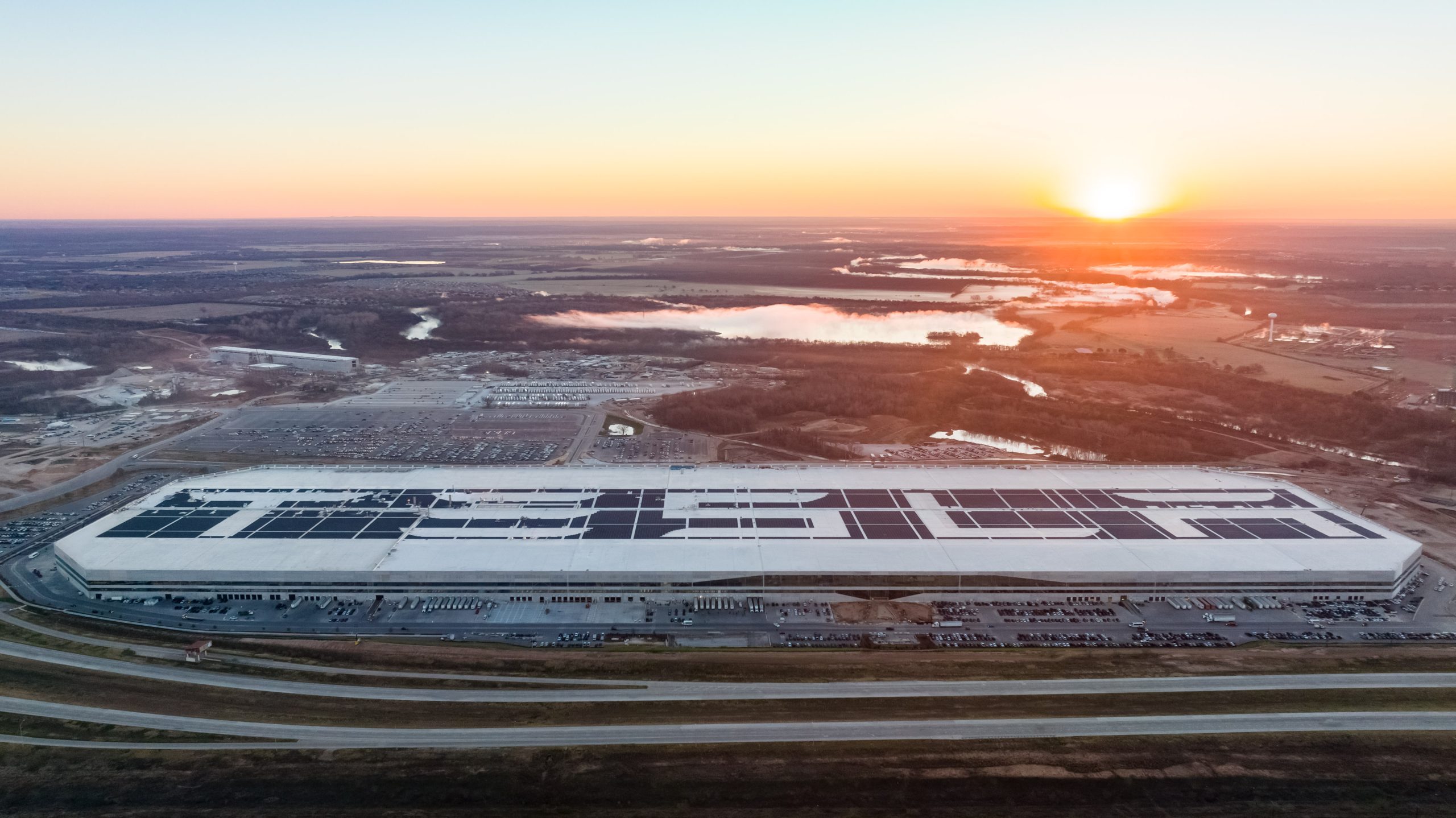
Tesla stock (NASDAQ: TSLA) closed at an all-time high on Tuesday, jumping over 3 percent during the day and finishing at $489.88.
The price beats the previous record close, which was $479.86.
Shares have had a crazy year, dipping more than 40 percent from the start of the year. The stock then started to recover once again around late April, when its price started to climb back up from the low $200 level.
This week, Tesla started to climb toward its highest levels ever, as it was revealed on Sunday that the company was testing driverless Robotaxis in Austin. The spike in value pushed the company’s valuation to $1.63 trillion.
Tesla Robotaxi goes driverless as Musk confirms Safety Monitor removal testing
It is the seventh-most valuable company on the market currently, trailing Nvidia, Apple, Alphabet (Google), Microsoft, Amazon, and Meta.
Shares closed up $14.57 today, up over 3 percent.
The stock has gone through a lot this year, as previously mentioned. Shares tumbled in Q1 due to CEO Elon Musk’s involvement with the Department of Government Efficiency (DOGE), which pulled his attention away from his companies and left a major overhang on their valuations.
However, things started to rebound halfway through the year, and as the government started to phase out the $7,500 tax credit, demand spiked as consumers tried to take advantage of it.
Q3 deliveries were the highest in company history, and Tesla responded to the loss of the tax credit with the launch of the Model 3 and Model Y Standard.
Additionally, analysts have announced high expectations this week for the company on Wall Street as Robotaxi continues to be the focus. With autonomy within Tesla’s sights, things are moving in the direction of Robotaxi being a major catalyst for growth on the Street in the coming year.
Elon Musk
Tesla needs to come through on this one Robotaxi metric, analyst says
“We think the key focus from here will be how fast Tesla can scale driverless operations (including if Tesla’s approach to software/hardware allows it to scale significantly faster than competitors, as the company has argued), and on profitability.”
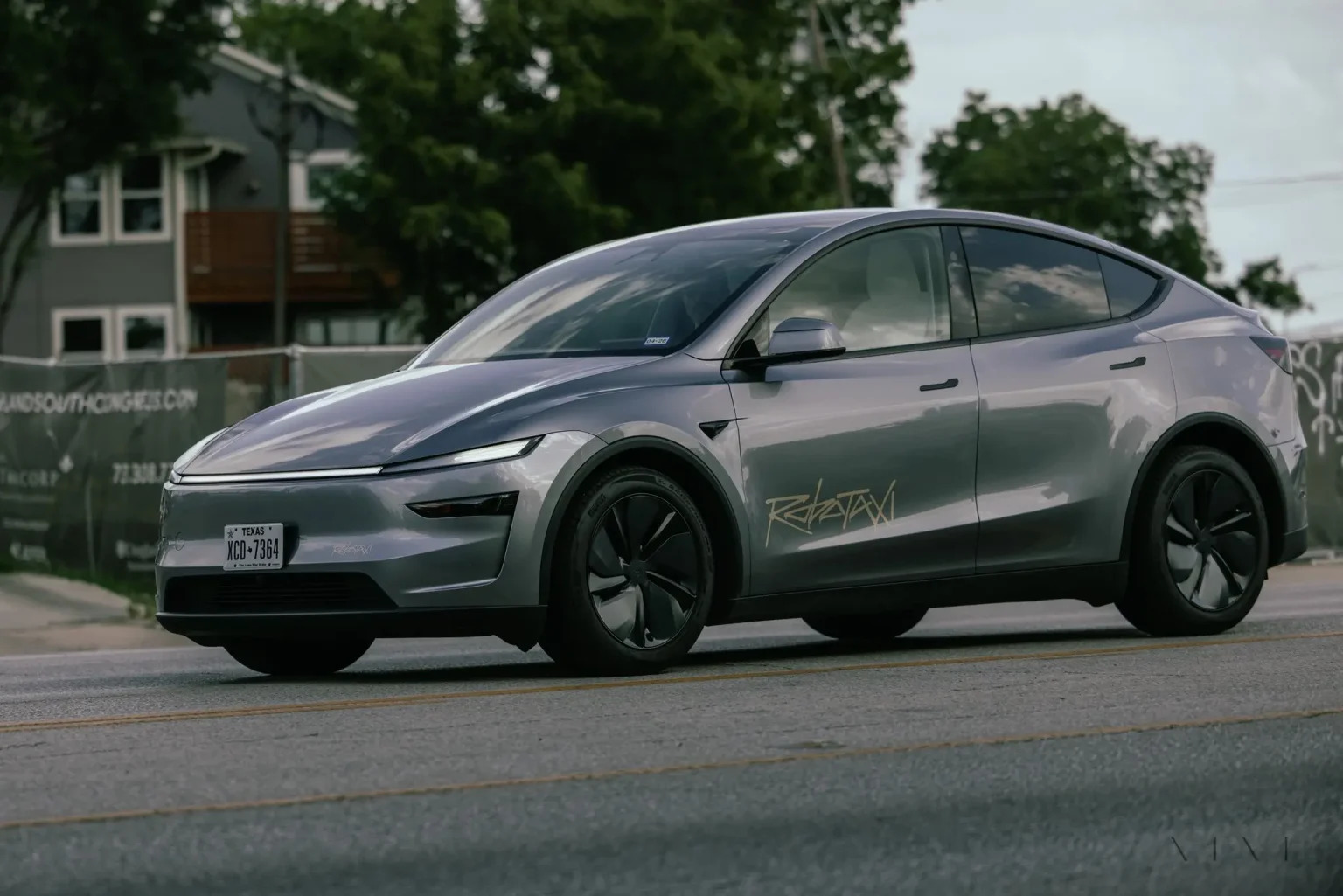
Tesla needs to come through on this one Robotaxi metric, Mark Delaney of Goldman Sachs says.
Tesla is in the process of rolling out its Robotaxi platform to areas outside of Austin and the California Bay Area. It has plans to launch in five additional cities, including Houston, Dallas, Miami, Las Vegas, and Phoenix.
However, the company’s expansion is not what the focus needs to be, according to Delaney. It’s the speed of deployment.
The analyst said:
“We think the key focus from here will be how fast Tesla can scale driverless operations (including if Tesla’s approach to software/hardware allows it to scale significantly faster than competitors, as the company has argued), and on profitability.”
Profitability will come as the Robotaxi fleet expands. Making that money will be dependent on when Tesla can initiate rides in more areas, giving more customers access to the program.
There are some additional things that the company needs to make happen ahead of the major Robotaxi expansion, one of those things is launching driverless rides in Austin, the first city in which it launched the program.
This week, Tesla started testing driverless Robotaxi rides in Austin, as two different Model Y units were spotted with no occupants, a huge step in the company’s plans for the ride-sharing platform.
Tesla Robotaxi goes driverless as Musk confirms Safety Monitor removal testing
CEO Elon Musk has been hoping to remove Safety Monitors from Robotaxis in Austin for several months, first mentioning the plan to have them out by the end of 2025 in September. He confirmed on Sunday that Tesla had officially removed vehicle occupants and started testing truly unsupervised rides.
Although Safety Monitors in Austin have been sitting in the passenger’s seat, they have still had the ability to override things in case of an emergency. After all, the ultimate goal was safety and avoiding any accidents or injuries.
Goldman Sachs reiterated its ‘Neutral’ rating and its $400 price target. Delaney said, “Tesla is making progress with its autonomous technology,” and recent developments make it evident that this is true.
Investor's Corner
Tesla gets bold Robotaxi prediction from Wall Street firm
Last week, Andrew Percoco took over Tesla analysis for Morgan Stanley from Adam Jonas, who covered the stock for years. Percoco seems to be less optimistic and bullish on Tesla shares, while still being fair and balanced in his analysis.
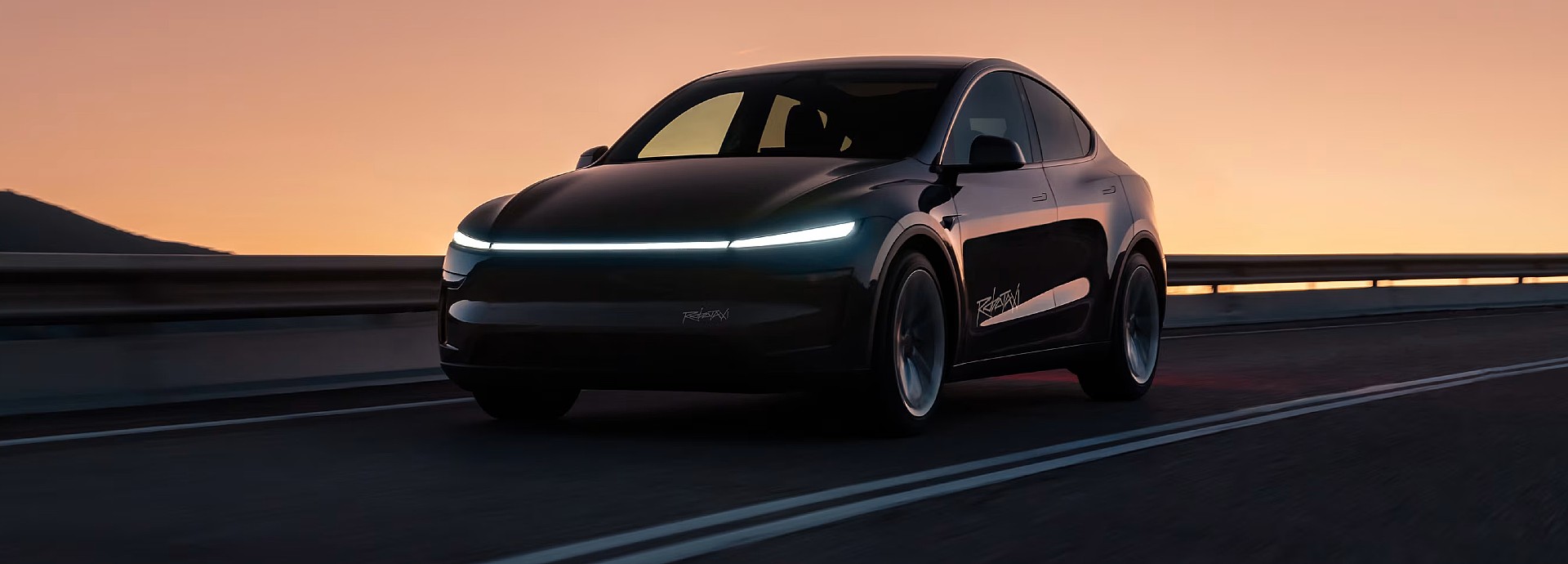
Tesla (NASDAQ: TSLA) received a bold Robotaxi prediction from Morgan Stanley, which anticipates a dramatic increase in the size of the company’s autonomous ride-hailing suite in the coming years.
Last week, Andrew Percoco took over Tesla analysis for Morgan Stanley from Adam Jonas, who covered the stock for years. Percoco seems to be less optimistic and bullish on Tesla shares, while still being fair and balanced in his analysis.
Percoco dug into the Robotaxi fleet and its expansion in the coming years in his latest note, released on Tuesday. The firm expects Tesla to increase the Robotaxi fleet size to 1,000 vehicles in 2026. However, that’s small-scale compared to what they expect from Tesla in a decade.
Tesla expands Robotaxi app access once again, this time on a global scale
By 2035, Morgan Stanley believes there will be one million Robotaxis on the road across multiple cities, a major jump and a considerable fleet size. We assume this means the fleet of vehicles Tesla will operate internally, and not including passenger-owned vehicles that could be added through software updates.
He also listed three specific catalysts that investors should pay attention to, as these will represent the company being on track to achieve its Robotaxi dreams:
- Opening Robotaxi to the public without a Safety Monitor. Timing is unclear, but it appears that Tesla is getting closer by the day.
- Improvement in safety metrics without the Safety Monitor. Tesla’s ability to improve its safety metrics as it scales miles driven without the Safety Monitor is imperative as it looks to scale in new states and cities in 2026.
- Cybercab start of production, targeted for April 2026. Tesla’s Cybercab is a purpose-built vehicle (no steering wheel or pedals, only two seats) that is expected to be produced through its state-of-the-art unboxed manufacturing process, offering further cost reductions and thus accelerating adoption over time.
Robotaxi stands to be one of Tesla’s most significant revenue contributors, especially as the company plans to continue expanding its ride-hailing service across the world in the coming years.
Its current deployment strategy is controlled and conservative to avoid any drastic and potentially program-ruining incidents.
So far, the program, which is active in Austin and the California Bay Area, has been widely successful.
